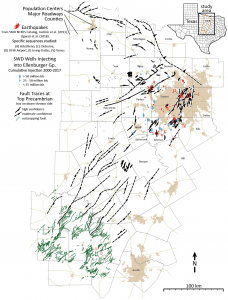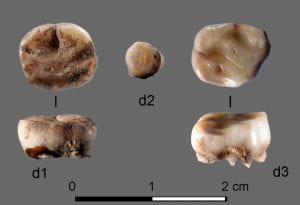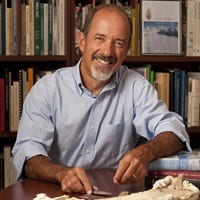 Distinguished geoscientist James Quick will open the doors to a new era of research and interdisciplinary collaboration.
Distinguished geoscientist James Quick will open the doors to a new era of research and interdisciplinary collaboration.
DALLAS (SMU) – Distinguished geoscientist James Quick will open the doors to a new era of research and interdisciplinary collaboration as the inaugural dean of SMU’s newly created Moody School of Graduate and Advanced Studies.
SMU announced the creation of the Moody School in November 2019, made possible by a landmark $100 million gift from the Moody Foundation. The investment in graduate-level education is fueling SMU’s move to join the finest universities in the country in its development of research with impact, delivered by top-notch faculty and graduate students.
Quick, a volcanologist of international stature, joined SMU in 2007 as the University’s first Associate Vice President for Research and Dean of Graduate Studies, with the responsibilities of supporting increases in research activity and the number of students graduating with a Ph.D. Since his arrival, research funding has increased from $14 million a year to $42 million a year, and annual graduation of Ph.D.s has increased from 45 to more than 70.
These increases contributed to SMU’s leap in 2011 past 55 sister institutions in the Carnegie Classification of Institutions of Higher Education to earn recognition for “high research activity.” The creation of the Moody School positions SMU to compete for coveted “R1” status, which is reserved for those institutions with the highest research activity.
“The new Moody School of Graduate and Advanced Studies is going to expand research efforts of SMU, the impact of which will benefit the universities, laboratories and businesses that employ our doctoral graduates,” said SMU President R. Gerald Turner. “Dean Quick is a passionate advocate for research and the cultivation of scholars, and is well placed to deliver on the promise of the Moody School to deliver research with even greater impact.”
The Moody School will begin formal operations during the 2020-21 academic year. The broad endowment funding provided by the Moody Foundation will guarantee the strength of the school in perpetuity, while the operational funds included in the gift provide for immediate impact. In addition to becoming the inaugural dean of the Moody School, Quick also retains the title of associate provost for research.
“Jim Quick was the chair of the faculty task force that spelled out the need for and ultimate creation of the new Moody School,” said Peter Moore, SMU provost and vice president for academic affairs ad interim. “He’s a natural for this position.”
About 45 percent of students at SMU are graduate students pursuing a master’s degree, doctorate or Ph.D., but the creation of the Moody School will create opportunities for all SMU students by extending to undergraduates more opportunities to participate in significant research and learn from prestigious faculty.
“The gift establishing the Moody School is an unprecedented investment in SMU, providing essential tools to dramatically elevate the University’s reputation in graduate education and powering its advance among research universities,” Quick said. “The opportunity to help guide SMU on this path as the Inaugural Dean is simultaneously exciting and humbling, and I look forward to working with SMU’s faculty to elevate graduate education, scholarship and research across the University.”
Eventually, all graduate degrees through Dedman College of Humanities and Sciences, Lyle School of Engineering, Meadows School of the Arts and Simmons School of Education and Human Development will be administered jointly through the Moody School. Students will receive diplomas to both their individual schools of study and the Moody School.
The Cox School of Business, Dedman School of Law and Perkins School of Theology do not offer Ph.D. studies and will continue to manage their own terminal degrees. But the Moody School will link interdisciplinary research and professional development from all SMU schools.
Quick joined SMU after a 25-year scientific career with the United States Geological Survey, including as program coordinator for the Volcano Hazards Program, where he supervised monitoring of the nation’s 169 volcanoes to provide critical early warning of eruptions. He has remained an active researcher during his tenure at SMU.
In 2009 Quick led scientists from the University of Trieste to discover an enormous, 280-million-year-old supervolcano fossil in the Sesia Valley in northern Italy, revealing the never-seen-before “plumbing” of a supervolcano all the way through the Earth’s crust. Italian geologists awarded Quick the Capellini Medal in September 2010 for the discovery, and the area encompassing the supervolcano later won UNESCO designation as the Sesia-Val Grande Geopark. Quick was named an honorary citizen of the city of Borgosesia, Italy, in recognition of the significance of the Sesia Valley discovery.
Quick became a fellow of the American Association for the Advancement of Science in November 2013. He was honored for his distinguished contributions to geologic science and volcanic risk assessment, particularly for the study of magmatic systems and for service to governments in assessing geologic risk.
About SMU
SMU is the nationally ranked global research university in the dynamic city of Dallas. SMU’s alumni, faculty and nearly 12,000 students in eight degree-granting schools demonstrate an entrepreneurial spirit as they lead change in their professions, communities and the world.




